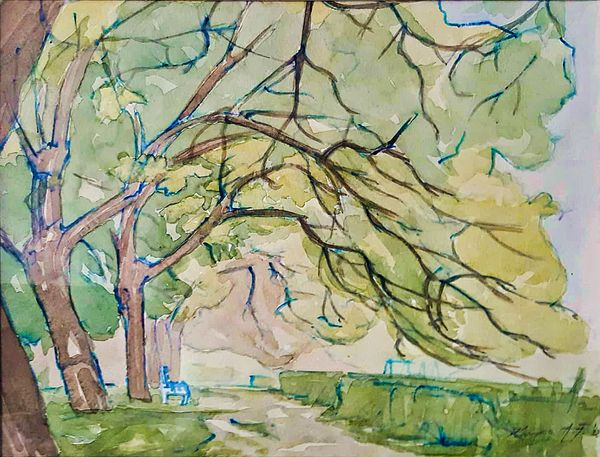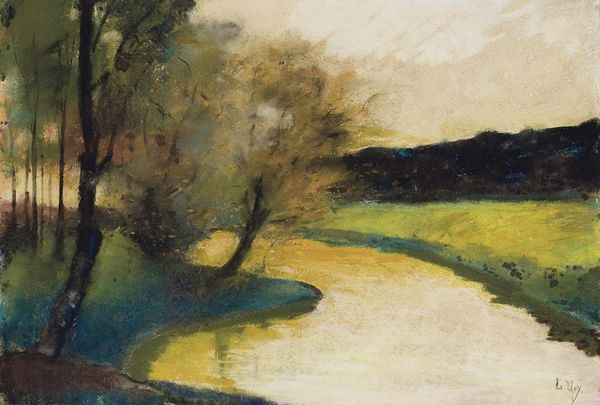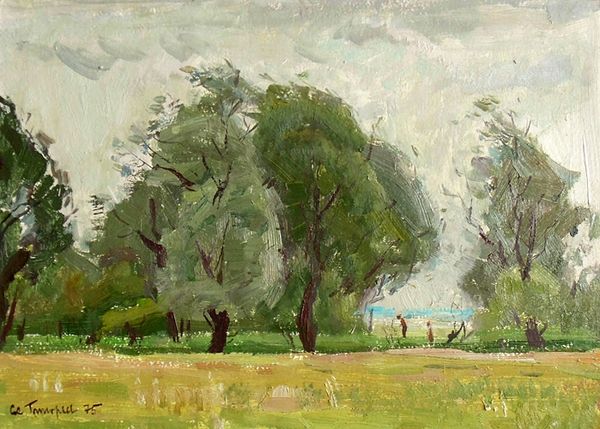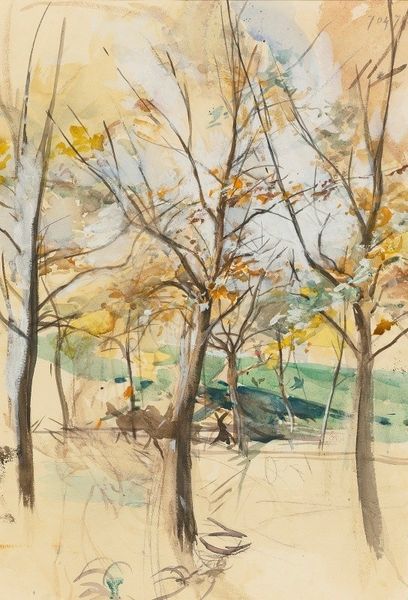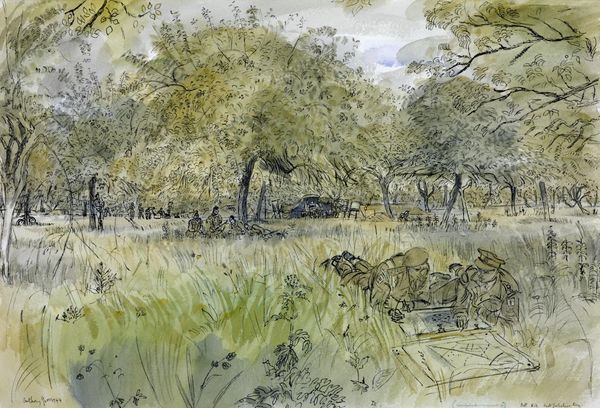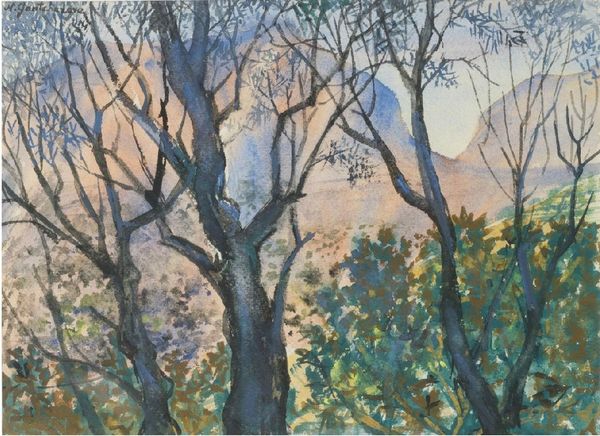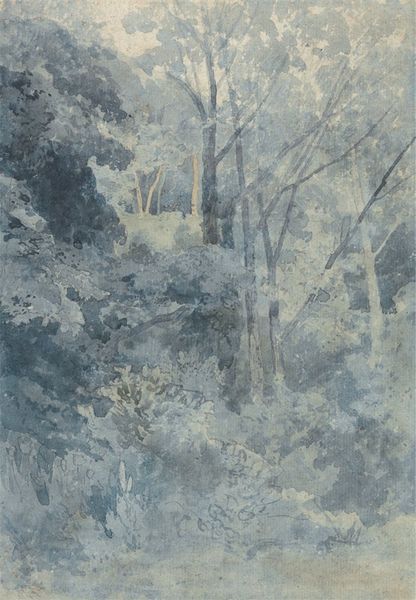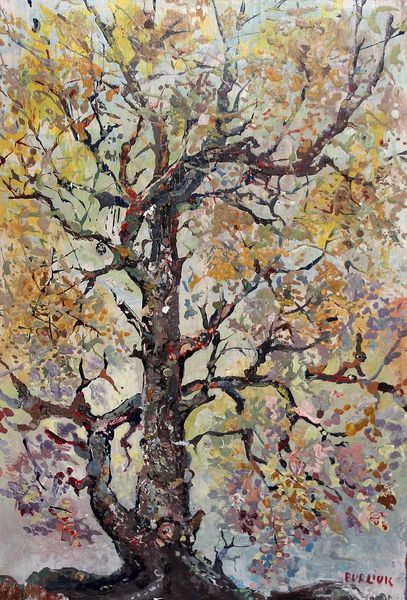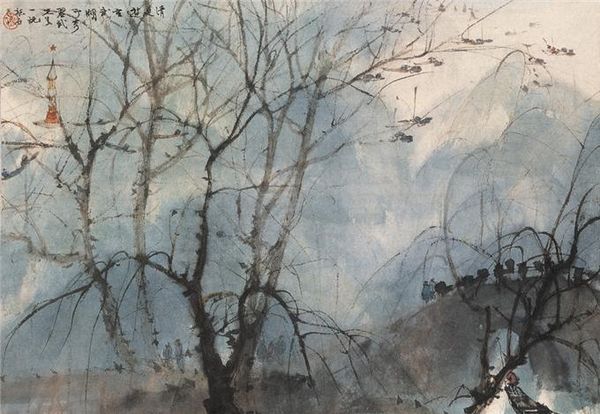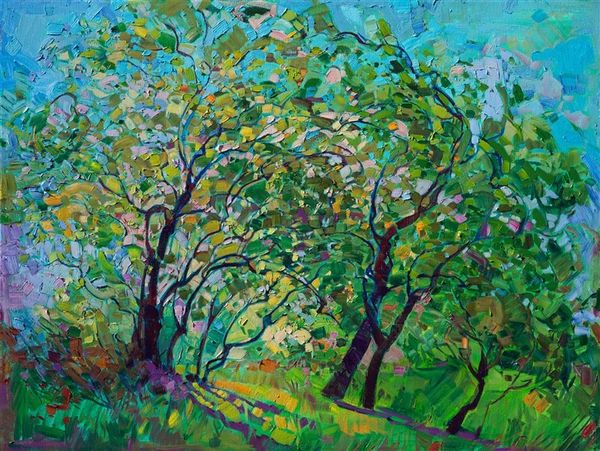
Copyright: Public Domain: Artvee
Editor: We’re looking at Richard Nicolaüs Roland Holst’s "Orchard at Eemnes," made between 1888 and 1895. It appears to be a watercolor, a quick plein-air sketch almost. It’s quite atmospheric, a little melancholic, even. How do you interpret this work? Curator: The "Orchard at Eemnes" captures a specific moment, yes, but let's think about the larger picture. Late 19th-century art increasingly engages with nature, but often in ways that are deeply intertwined with social issues. The orchard, historically tied to ideas of labor, sustenance, and a connection to the land, presents interesting questions. How might Holst's portrayal engage with contemporary debates around land ownership, rural life, and the burgeoning industrial society? Editor: That’s interesting! I was mostly seeing the formal elements, like the stark tree against the softer greens, but your point about land and labor gives me a different view. It feels less idyllic now. Curator: Exactly. It pushes us to consider what Roland Holst is foregrounding by visually centering a leafless tree. Does its starkness highlight an anxiety over the rapid environmental changes sweeping across Europe in this period? Perhaps it represents something lost, something broken or threatened. And consider who had access to land and its fruits during that time. How might gender or class play into our interpretation? Editor: So, you’re saying that the painting can be seen as more than just a landscape, it's a commentary on societal anxieties. The skeletal tree suggests loss of something bigger, not just visual. Curator: Precisely! By investigating the context of Roland Holst’s “Orchard at Eemnes”, we can critically look into landscape painting as deeply interwoven within history, social structures, and human rights. Editor: Thanks, that was a real eye-opener!
Comments
No comments
Be the first to comment and join the conversation on the ultimate creative platform.
